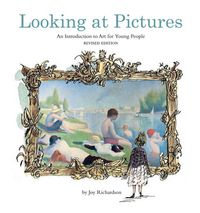
Design for How People Learn
A Nonfiction, Teaching, Design book. Ive heard the argument that learners dont know what they dont know, and that they...
Products, technologies, and workplaces change so quickly today that everyone is continually learning. Many of us are also teaching, even when it's not in our job descriptions. Whether it's giving a presentation, writing documentation, or creating a website or blog, we need and want to share our knowledge with other people. But if you've ever fallen asleep over a boring textbook, or fast-forwarded through a tedious e-learning exercise, you know that creating a great learning experience is harder than it seems. In "Design For How People Learn," you'll discover how to use the key principles behind learning, memory, and attention to create materials that enable your audience to both gain and retain the knowledge and skills you're sharing. Using accessible visual metaphors and concrete methods and examples, "Design For How People Learn" will teach you how to leverage the fundamental concepts of instructional design both to improve your own learning and to engage your audience.
Download or read Design for How People Learn in PDF formats. You may also find other subjects related with Design for How People Learn.
- Filetype: PDF
- Pages: 259 pages
- ISBN: 9780321768438 / 0
Hku-25_dh8W.pdf
More About Design for How People Learn
Dan Ariely, a behavioral economist, did an experiment in which people were paid to make LEGO shapesa small sum for each shape they created. In one group, each LEGO shape was displayed prominently when it was completed, and in the other each shape was broken back apart in front of the person, and the pieces dumped back in the bins to be re-used (Ariely 2008). Participants in the first group made significantly more shapes than people in the second, even though the financial rewards were exactly the same. Julie Dirksen, Design For How People Learn // Ive heard the argument that learners dont know what they dont know, and that they need guidance and directions. This can be a justification for less autonomy in an environment, but there are always ways to give options to even the most novice learners. Some ways you can give learners autonomy: Let them help determine whats learned. Let them choose where to start, or what order to approach the material. Have them make decisions about what assignments or projects they do. Have them bring their own questions, projects, or problems to the table, and focus... I wince now to think of when I was a new teacher, and said things like "This is really important stuff" or "You'll be really glad you know this stuff later on. Julie Dirksen, Design for How People Learn //
This was a good introduction to designing content for adult learners, particularly a good starting space for someone like me - new in the world of teaching, and, gasp, college students! This book is more aimed towards corporate learning environments than the classroom, but there was certainly good content and questions posed to the... As an Art Director/Designer at an educational publisher, I found this to be a helpful source of information about how people learn. It is written by an Instructional Designer, but is easily understandable by others outside the field. After reading the text, I have learned some tips about how to design more effective learning experiences.... Finally, a book that doesn't ignore the learning principles it recommends in the book supposed to teach those learning principles. She talked about showing versus telling and this principle is evident throughout the book. Excellent resource, extremely practical. I would recommend to all teachers regardless of student population.











